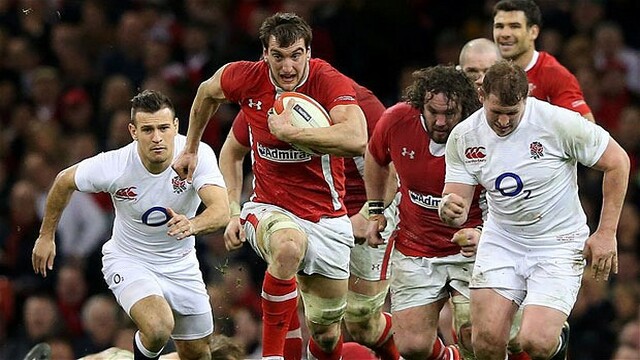Watching the first four rounds of the Top 14 in France, I have been continually frustrated by the number of try-scoring opportunities wasted through poor basic draw and pass skills. 5-on-3s and 4-on-2s are being squandered by forwards (and sometimes backs) smashing into contact and teams are repeatedly failing to exploit space. Elsewhere, it is apparent that slow ball is often due to backs’ (and sometimes forwards’) inability to effectively clear rucks. Am I expecting too much? Is it realistic to expect rugby players to do everything well?
The Dutch side of the 1970s is one of the most famous football teams in history. Playing a beautiful brand of total football, the Dutch excited and delighted fans at the 1974 World Cup. Players interchanged roles seamlessly; everyone could defend with intelligence and attack with creativity.The system placed huge physical and technical demands on the players, with space the central idea to everything. It is worth noting that Holland lost the ’74 final to Germany, perhaps partly explaining why they are remembered so fondly. They again lost in the final to the host nation four years later.
Rugby is clearly very different to football, and what worked for the Dutch does not necessarily apply to our game. While rugby players have become more uniformly powerful, it is very much still a game where all body shapes can contribute.The set piece in rugby demands very specific skills and cannot be ignored. A wing or fullback has a greater need to improve his footwork than a prop does, based on the space and field position in which he often receives possession.That said, it is certainly true that rugby players can be interchangeable in positions where the team needs to take advantage of an overlap, or clear a ruck efficiently in order to benefit from a favourable attacking position.
Every player on Holland’s total football team understood how to look for space and how to create space. The same cannot be said for many rugby teams. Outside of our main decision makers at halfback, do we have a consistent appreciation of space amongst our players? On the flip side, by focusing on training props to draw and pass with excellence, by concentrating on coaching our wings to blast rucks, or by asking our locks to practice beating defenders, are we neglecting the skills that remain central to their positions?
Coaches generally have very little face time with their players on the training pitch each week. At amateur levels, three to four hours is the upper limit for many teams. Is that enough time to focus on aspects like the set piece and team structure as well as coaching the players towards a more total rugby? A story from Clive Woodward’s coaching days at London Irish comes to mind. Frustrated by his players’ inability to think for themselves, and their mental approach of ‘that’s how it’s always been done’, Woodward came up with an interesting way of broadening their minds. Before one game, he lined the team up in the alphabetical order of their names and handed them jerseys 1 to 15 in that sequence. That meant props were wearing number 13 or 8 and wings had 1 or 9 on their backs. Amidst great confusion on the opposition’s part, London Irish ran riot. In the words of Woodward, “What does it matter what position you play or what number you wear? It’s a game with thirty men and a ball.”
While the former England coach’s method of helping his players to understand his point was extreme, it is not difficult to appreciate his sentiment. Woodward is a self-proclaimed disciple of the late Jim Greenwood, author of Total Rugby. In that book, the highly regarded guru detailed his belief that “every player should be encouraged to show what he can do as an attacker, defender and supporting player.” That statement makes total sense. Coaches should encourage and equip all of their players to express themselves on the pitch, to have more rounded skills. As RR discussed here on The Rugby Site recently, draw and pass skills are being neglected and under trained.
It’s not just about the attacking side of the game though. With intelligent coaching, everyone can make effective tackles and compete at the breakdown. Helping players to understand that they can contribute more than just the specific skills of their position is a large part of the challenge. While we may never arrive at a nirvana of truly total rugby, where every player is equally good at the core skills, it is certainly desirable to attempt to get there. Finding a balance in our training and approach to games is the key. A tighthead prop needs to spend more time on his scrummaging than a scrumhalf, while a fullback needs to work on his catching more often than a hooker. But in skills like fixing defenders, passing, rucking and tackling, achieving a more uniform level of ability throughout the squad is an attainable goal.
As always, feedback is greatly appreciated here on The Rugby Site. Is total rugby something coaches aspire to? How do you find the balance between working on specific ‘positional’ skills and focusing on general core abilities with the squad as a whole? Is it too much to expect all players to draw, pass, tackle and ruck with equal effectiveness? As a player, do you strive to improve in all aspects of the game, or is it more crucial to concentrate on skills that directly apply to your role? And the most important question of them all – which is the team that has most fulfilled the ideal of total rugby in your opinion?


